L-CYSTINE DIHYDROCHLORIDE
Synonym(s):L -Cystine dihydrochloride
- CAS NO.:30925-07-6
- Empirical Formula: C6H13ClN2O4S2
- Molecular Weight: 276.75
- MDL number: MFCD00070399
- EINECS: 250-391-9
- SAFETY DATA SHEET (SDS)
- Update Date: 2024-08-21 22:41:43
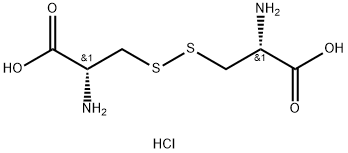
What is L-CYSTINE DIHYDROCHLORIDE?
Chemical properties
Solid
The Uses of L-CYSTINE DIHYDROCHLORIDE
L-Cystine is a sulfur containing non-essential amino acid. It is used as a cell culture media component and raw material in the commercial biomanufacture of therapeutic recombinant proteins and monoclonal antibodies. L-Cystine dihydrochloride is a modified version of L-Cystine with improved solubility.
Flammability and Explosibility
Not classified
Biochem/physiol Actions
L-Cystine is a natural proteinogenic amino acid sulfide dimer of L-cysteine. L-cystine is used as a cell culture supplement. L-cystine is also used to characterize and identify specific amino acid transport systems in cells such as system system Xc(─) .
Properties of L-CYSTINE DIHYDROCHLORIDE
| Melting point: | 228-232℃ |
| alpha | [α]D20 -165~-175° (c=1, dil. HCl) |
| Density | 1.518[at 20℃] |
| vapor pressure | 0Pa at 20℃ |
| storage temp. | Keep in dark place,Inert atmosphere,Room temperature |
| solubility | 0.5 M HCl: 50 mg/mL |
| form | Powder |
| color | White to Pale Yellow |
| Odor | odorless |
| Water Solubility | Soluble in hydrochloric acid. (0.5 M HCl: 50 mg/mL) Soluble in water. |
| InChI | InChI=1/C6H12N2O4S2.ClH/c7-3(5(9)10)1-13-14-2-4(8)6(11)12;/h3-4H,1-2,7-8H2,(H,9,10)(H,11,12);1H/t3-,4-;/s3 |
| CAS DataBase Reference | 30925-07-6(CAS DataBase Reference) |
Safety information for L-CYSTINE DIHYDROCHLORIDE
| Signal word | Danger |
| Pictogram(s) |
 Corrosion Corrosives GHS05 |
| GHS Hazard Statements |
H314:Skin corrosion/irritation |
| Precautionary Statement Codes |
P260:Do not breathe dust/fume/gas/mist/vapours/spray. P280:Wear protective gloves/protective clothing/eye protection/face protection. P363:Wash contaminated clothing before reuse. P303+P361+P353:IF ON SKIN (or hair): Remove/Take off Immediately all contaminated clothing. Rinse SKIN with water/shower. P305+P351+P338:IF IN EYES: Rinse cautiously with water for several minutes. Remove contact lenses, if present and easy to do. Continuerinsing. |
Computed Descriptors for L-CYSTINE DIHYDROCHLORIDE
| InChIKey | IOCJWNPYGRVHLN-QYDODFSFNA-N |
| SMILES | [C@@H](N)(C(=O)O)CSSC[C@H](N)C(=O)O.Cl |&1:0,9,r| |
New Products
Tert-butyl bis(2-chloroethyl)carbamate (S)-3-Aminobutanenitrile hydrochloride N-Boc-D-alaninol N-BOC-D/L-ALANINOL 3-(2,4-Dimethoxybenzyl)dihydropyrimidine-2,4(1H,3H)-dione 7-Bromo-1H-indazole N-octanoyl benzotriazole 3,4-Dibenzyloxybenzaldehyde 4-Hydrazinobenzoic acid Electrolytic Iron Powder Fmoc-Val-Cit-PAB 1,1’-CARBONYLDIIMIDAZOLE R-2-BENZYLOXY PROPIONIC ACID 4-HYDROXY BENZYL ALCOHOL 1,1’-CARBONYLDI (1,2-4 TRIAZOLE) S-2-CHLORO PROPIONIC ACID (2-Hydroxyphenyl)acetonitrile 4-Bromopyrazole 5-BROMO-2CYANO PYRIDINE 5,6-Dimethoxyindanone 5-broMo-2-chloro-N-cyclopentylpyriMidin-4-aMine 1-(4-Methylphenylsulfonyl)-1H-1,2,3-benzotriazole 1-(2-Chlorobenzyl)-4-nitro-1H-pyrazole 1-(2-Nitrophenyl)-4-phenylpiperazineRelated products of tetrahydrofuran

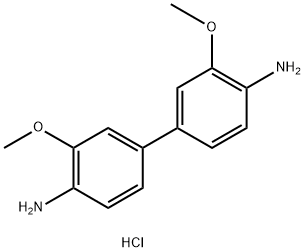


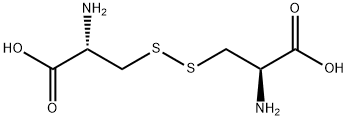
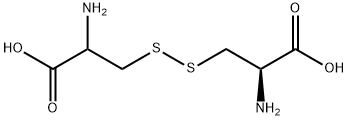
![3-[(2-AMINOETHYL)DITHIO]PROPIONIC ACID](https://img.chemicalbook.in/CAS/GIF/15579-00-7.gif)
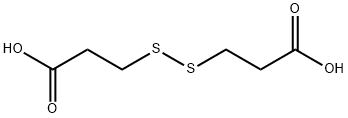
You may like
-
 L-Cystine dihydrochloride 98% CAS 30925-07-6View Details
L-Cystine dihydrochloride 98% CAS 30925-07-6View Details
30925-07-6 -
 L-(-)-Cystine Dihydrochloride CAS 30925-07-6View Details
L-(-)-Cystine Dihydrochloride CAS 30925-07-6View Details
30925-07-6 -
 L-cystine Dihydrochloride CAS 30925-07-6View Details
L-cystine Dihydrochloride CAS 30925-07-6View Details
30925-07-6 -
 L-Cystine dihydrochloride CAS 30925-07-6View Details
L-Cystine dihydrochloride CAS 30925-07-6View Details
30925-07-6 -
 L-Cystine dihydrochloride, non-animal derived CAS 30925-07-6View Details
L-Cystine dihydrochloride, non-animal derived CAS 30925-07-6View Details
30925-07-6 -
 L-Cystine dihydrochloride CAS 30925-07-6View Details
L-Cystine dihydrochloride CAS 30925-07-6View Details
30925-07-6 -
 1446013-08-6 Fmoc-His-Aib-OH TFA 98%View Details
1446013-08-6 Fmoc-His-Aib-OH TFA 98%View Details
1446013-08-6 -
 2-ETHYLPYRIDINE 100-71-0 99%View Details
2-ETHYLPYRIDINE 100-71-0 99%View Details
100-71-0
Statement: All products displayed on this website are only used for non medical purposes such as industrial applications or scientific research, and cannot be used for clinical diagnosis or treatment of humans or animals. They are not medicinal or edible.